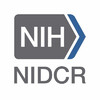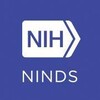
Pilot Study of Auto-immune Abnormalities Associated With Down Syndrome
Down Syndrome With and Without Auto Immune AbnormalitiesThe purpose of the study is to identify biological data linked to auto immune abnormalities associated with Down Syndrome.

Study of Gulf War Illness (GWI) by Comparing GWI and Healthy Veterans
Gulf War IllnessPersian Gulf War SyndromeDetermine if: genetic differences of CNDP1 gene the previously defined GWI/Chronic Fatigue Syndrome (GWI/CFS) cerebrospinal fluid proteome contents psychometric other variables can differentiate between veterans of the 1990-1991 Persian Gulf War who have autonomic, neurological and other symptoms and those without these complaints.

Proteomics of Cerebrospinal Fluid in Chronic Fatigue Syndrome
Chronic Fatigue SyndromeFibromyalgia4 moreThe purpose of this study is: To identify specific set of proteins in the cerebrospinal fluid (fluid surrounding the brain and the spinal cord), that are believed to be seen in Chronic fatigue syndrome (CFS) patients, but not in healthy controls (HC). A similar study that the investigators had conducted before,suggested that significant changes in proteins in the cerebrospinal fluid may be due to the fundamental pathology of this disorder. Increased cerebrospinal fluid pressure (pressure that helps the cerebrospinal fluid to move around the brain and the spinal cord), may be related with certain symptoms like headache, sleep problems, light headedness, increased pain, excessive tiredness (fatigue) even with minimal work and memory problems. Assessment of Autonomic Nervous system function (Sympathetic nervous system)between the CFS and HC. Perform Lung Function Testing or pulmonary function test to estimate the lung capacities and score shortness of breath while performing breathing maneuvers. Dolorimetry (18 tender point test) for assessment of pain threshold. Capsaicin skin test Allergy skin test

Vascular Endothelial Growth Factor (VEGF), Platelet Derived Growth Factor (PDGF), Hepatocyte Growth...
Acute Coronary SyndromeThe main aim of the study is a comparison of serum and plasma concentration of VEGF (Vascular Endothelial Growth Factor), HGF (Hepatocyte Growth Factor) and PDGF (Platelet Derived Growth Factor) with markers of myocardial injury as troponin I, hsCRP, CK-MB and NT-proBNP assessed in patients with first episode of acute coronary syndrome (ACS) in their lives and the estimation of assumed value of VEGF, HGF and PDGF in prognosis of cardiovascular complications at 3 months follow up especially with respect to myocardial infarction (MI), exacerbation of angina, reintervention (PTCA,CABG), symptoms of heart failure, stroke, rehospitalization due to cardiovascular reasons and death. The dynamics of changes in serum and plasma concentration of growth factors in comparison with values of myocardial injury markers will be checked. For the realization of the purpose of the study biochemical measurements will be performed twice i.e. just after admission to hospital and 24h later. Area of a myocardial injury will be estimated by echocardiography examination.

Regional Observation of the Metabolic Syndrome
Metabolic SyndromeThe aim of the study, is to assess the prevalence of metabolic syndrome in Italy on a regional basis, defined according to National Cholesterol Education Program/Adult Treatment Panel III (NCEP/ATPIII) guidelines criteria.

Evaluation of the Role of the Autonomic Nervous System in Sj(SqrRoot)(Delta)Gren s Syndrome
Sjogren's SyndromeDysautonomiaBackground: Sj(SqrRoot)(Delta)gren s Syndrome (SS) is an autoimmune disease that affects the glands that produce saliva and tears, causing dry eyes and dry mouth. Researchers do not know the exact cause of SS, but they believe that it may be caused by abnormalities in the autonomic nervous system (ANS) that stimulate these glands. Objectives: To better understand ANS function in patients with SS. To compare information about ANS function in healthy individuals and in patients with SS. Eligibility: Patients with Sj(SqrRoot)(Delta)gren s Syndrome who are 18 years of age and older, and who are not pregnant or breastfeeding. Participants will be asked to taper or discontinue the use of certain medications or dietary supplements before the ANS testing. Participants must be willing to discontinue the use of alcohol and tobacco 24 hours prior to testing. Design: The study will require one inpatient admission and/or outpatient visits to the NIH Clinical Center. The following tests and procedures will be performed: Saliva, tear, and sweat production measurements to evaluate the function of glands. Testing of changes to the cardiovascular system, including blood pressure and blood flow testing, and an electrocardiogram designed to evaluate hemodynamic changes controlled by the ANS. Testing of changes to the gastrointestinal system, including a swallowing assessment study, barium swallow study, and gastric emptying study designed to evaluate gastrointestinal function controlled by the ANS. Tests to evaluate the ANS function in response to certain drugs (edrophonium, glucagon and acetylcholine). Self-reported questionnaire on ANS function and emotional/psychological well-being. Additional procedures and tests may include the following: Blood samples. Optional skin biopsy to study sweat glands and nerve supply of the skin.

Sleep Disturbance and Sleep Quality in Women With Fibromyalgia Syndrome
Fibromyalgia SyndromeThe purpose of this week long study is to describe sleep and problems with sleep in women diagnosed with Fibromyalgia syndrome.

Immune Reconstitution Syndrome in HIV-Infected Patients Taking Antiretroviral Therapy
Immune Reconstitution Inflammatory SyndromeThis study will investigate what factors may lead to the development of immune reconstitution syndrome (IRIS) in HIV-infected patients and what the outcome is after IRIS. It will also seek to better define and describe the syndrome. IRIS is a condition that can occur in HIV-infected people following the start of antiretroviral therapy. The sudden improvement of immune function with this therapy can cause an unexpected worsening of diseases the patient already has, such as tuberculosis or fungal infections, and development of fever, enlarged lymph nodes or other complications, or even uncover a previously silent disease. HIV-infected people who are at least 18 years old, whose CD4+T cell count is 100 cells per microliter or less, and who have not previously been treated with combination antiretroviral therapy or have taken the drugs for less than 3 months and more than 6 months before screening for this study may be eligible to participate. Candindates must also live within the wider DC area so that acute problems after therapy initiation will be evaluated at NIH. Candidates are evaluated before starting therapy with a medical history and physical examination, blood and urine tests, electrocardiogram, chest x-ray and CT scan of the chest, tuberculin skin testing, apheresis, and possibly an intestinal (gut) and lymph node biopsy (surgical removal of a small piece of tissue for microscopic examination). For apheresis, blood is collected through a needle in an arm vein and spun in a machine that separates the blood components. The white blood cells and plasma are removed, and the red cells and platelets are returned through the same needle or through a needle in a vein in the other arm. Participants have a complete history and physical examination and additional blood tests, including genetic studies, upon entering the study. They start taking anti-HIV medications, prescribed according to the current standard of care, as well as medications to treat other infections, and treatment of IRIS, if needed. The study lasts about 4 years. Patients return to the clinic at 2, 4, 8 and 12 weeks after the entry visit, then every 12 weeks (about every 3 months) until week 48 (the first year), and then every 16 weeks (about every 4 months) until the end of the study. At most visits, patients have a medical history, physical examination and blood and urine tests, including CD4+T cell count and HIV plasma viral load measurement. Apheresis is also done at weeks 24 and 48 and then once every 48 weeks. Intestinal and lymph node biopsies (optional) are also done at weeks 24 and 48. A syphilis test and PAP smear (for women) are done yearly. and plasma, cells and serum are stored at almost every visit for immunologic studies.

Transcranial Duplex Scanning and Single Photon Emission Computer Tomography (SPECT) in Parkinsonian...
Parkinson's DiseaseParkinsonian Syndrome6 moreThe purpose of the study is to determine the sensitivity and specificity of transcranial duplex scanning (TCD) and single photon emission computer tomography (SPECT) in patients suspected of having Idiopathic Parkinson Disease (PD) or Atypical Parkinson Syndromes (APS) with as golden standard the clinical diagnosis after 2-year follow-up.

Relationship Between Sensory and Motor Systems in Restless Leg Syndrome
Restless Legs SyndromeThis study will explore what occurs between sensory and motor systems in restless legs syndrome (RLS). Patients with RLS have uncomfortable sensations in the legs, usually in the evening or early part of the night. Most patients also have periodic involuntary leg movements. The condition tends to worsen over time, resulting in severe discomfort and sleep disturbances. Healthy normal volunteers and patients with RLS between 18 and 80 years of age may be eligible for this study. All candidates will be screened with a medical history, physical and neurological evaluations, electroymogram (measure of muscle activity), overnight sleep study, electrocardiogram (ECG, measurement of the electrical activity of the heart), and blood and urine tests. They may also have brain or spine magnetic resonance imaging (MRI) or computerized tomography (CT) scans and a chest X-ray. Participants must stop taking all medications prohibited by the study for 2 days or more before the study starts and throughout its duration. Participants will undergo prepulse inhibition tests to assess nervous system function. The participant sits comfortably in a quiet room. Several cables are attached to the face and legs using a special cream that conducts electrical signals through the cables to recording equipment. Nervous system activity is evaluated while the subject is at rest and after sensory stimulation (stimulating the nerves in the legs and face with a very brief electrical current of mild to moderate intensity). At times, the subject receives a short, mild sound stimulation delivered through earphones. The testing session takes 4 to 6 hours.
